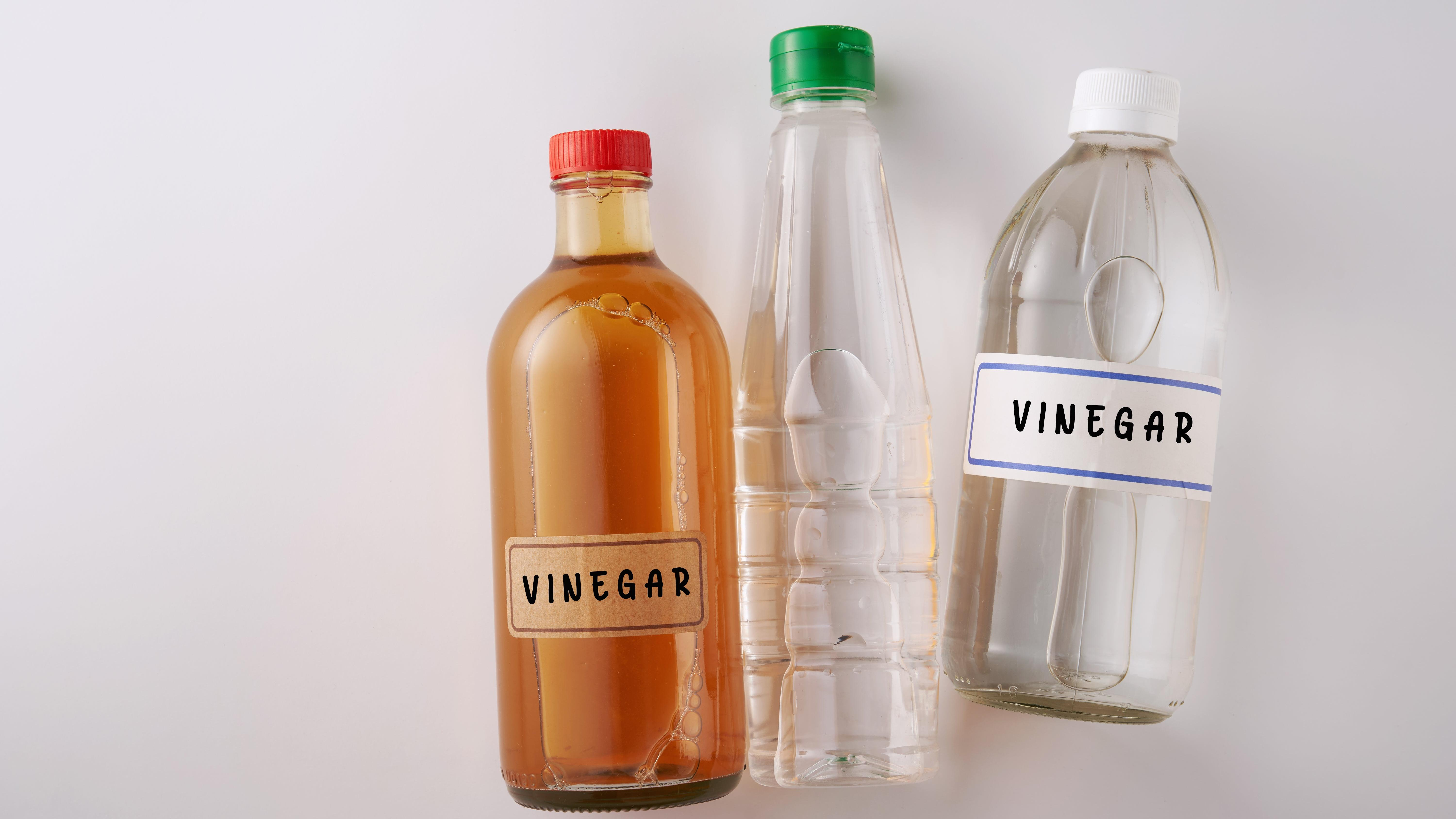Cooking Vinegar, Cleaning Vinegar—what's The Difference?
These vinegars have equally strong smells, but each has a different purpose.
We may receive a commission on purchases made from links.
To get a better understanding of the different types of vinegar, as well as the taste, smell, and utility of each one, let's first take a Bill Nye the Science Guy approach and look at what vinegar actually is from a chemistry standpoint.
The Harvard T.H. Chan School of Public Health describes vinegar as "a combination of acetic acid and water made by a two-step fermentation process." The first step of this process is when yeast feeds on the sugar or starch that comes from the natural water in foods like fruits, potatoes, or rice. The liquid that results from that ferments into alcohol. Then in the second step, the alcohol and acetic acid are exposed to oxygen, allowing it all to ferment again over weeks or months to form vinegar. The acetic acid is what causes the strong smells and tartness we commonly associate with vinegar.
Cleaning, cooking, and pickling. Does one magical liquid do it all, or is there technically a difference between the three? And what happens if you use one for a different purpose?
Cooking vinegar
Harvard's Nutrition Source names distilled white vinegar, white wine vinegar, red wine vinegar, apple cider vinegar, balsamic vinegar, and rice vinegar as some of the most common consumable types. The most versatile of the six is distilled white vinegar. This type serves as a sort of blank canvas, as the taste is neutral and it can be used for all three purposes (cooking, cleaning, and pickling).
Many of the other types of vinegar have additions like herbs and fruit juices, which set them apart from plain white vinegar. You can find vinegar in everything from salad dressings to meat marinades, but there are a number of different vinegars with different flavors within the cooking category.
Harvard experts note that vinegar can change the texture of foods, not just the flavor. When used as a marinade, vinegar breaks down the chemical structure of protein, which tenderizes it. You can also make cottage cheese by adding vinegar to milk because the acid in vinegar separates curds from the liquid whey.
Cleaning vinegar
Per the above, white distilled vinegar is the type of vinegar that people often use for both cleaning and cooking. However, some brands market vinegar specifically as a cleaning product. This raises the question: What is the difference between those products and the bottle in my pantry? The answer is not much other than the concentration of the acid in it.
Apartment Therapy explains that the distilled white vinegar used in cooking contains about a 4-5% concentration that makes it safer for consumption versus the 6-75% concentration found in cleaning vinegar. So to put it plainly, cooking vinegar can be used to clean, but cleaning vinegar should not be consumed. The low concentration of white cooking vinegar is strong enough to kill some household bacteria but not all. Experts say it works well on removing soap scum in sinks, drains, and shower stalls.
Pickling vinegar
Once again, because it is the most neutral of the vinegars, distilled white is considered the best for pickling foods. However, other types of vinegar like apple cider (fruity and sweeter than most vinegar) can be used for pickling. It all depends on the flavor you're looking for. As previously mentioned, vinegar has a concentration that can help kill bacteria. Combine that with water, salt, and sugar and you get a brine solution that can extend the shelf life of some foods. This is called pickling. The vinegar used in pickling can be the same as that used in cooking, so the concentration of acid remains around 4-5%.
Of vinegar's many abilities I have to say that pickling is my favorite. The mighty pickle, my favorite snack, would be nothing without the liquid that gives it its essence. Hopefully, these distinctions save you from ruining your carpet or lead you to the perfect pickle. I can only dream.
